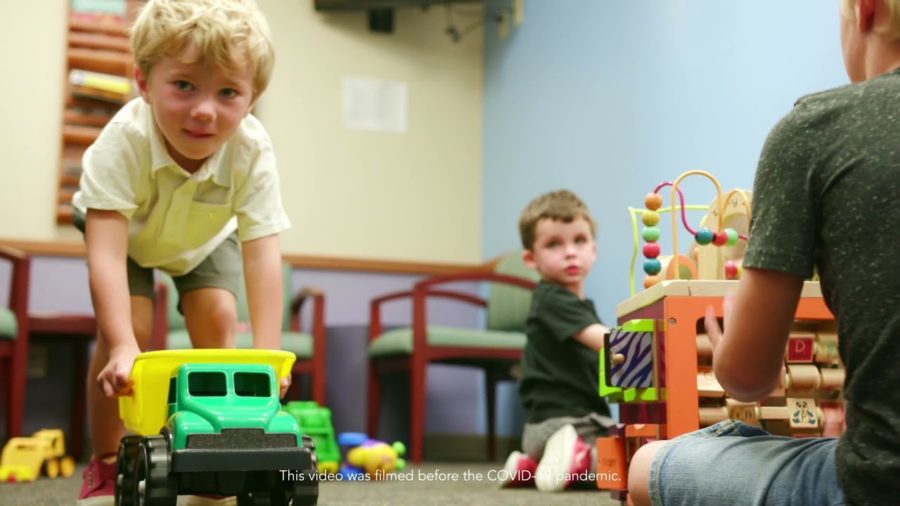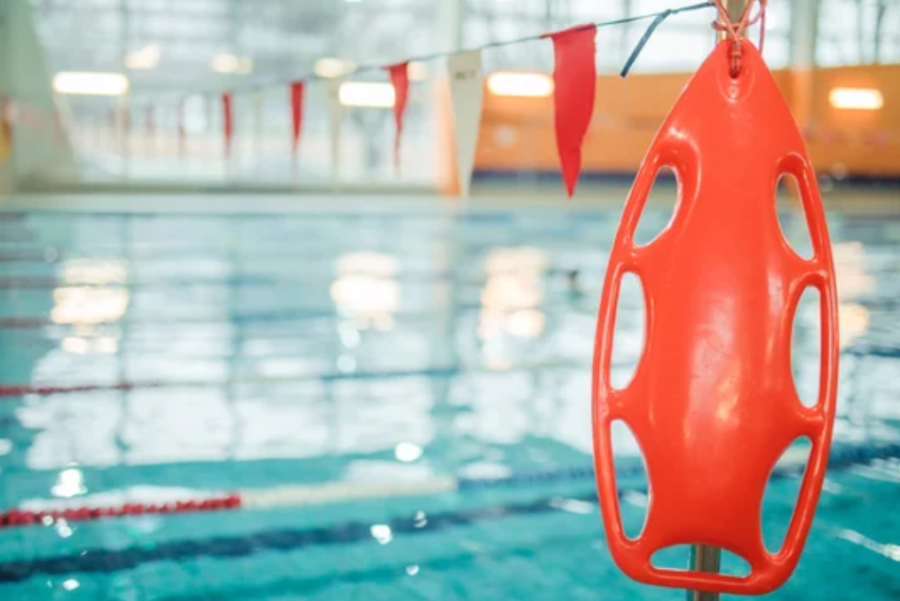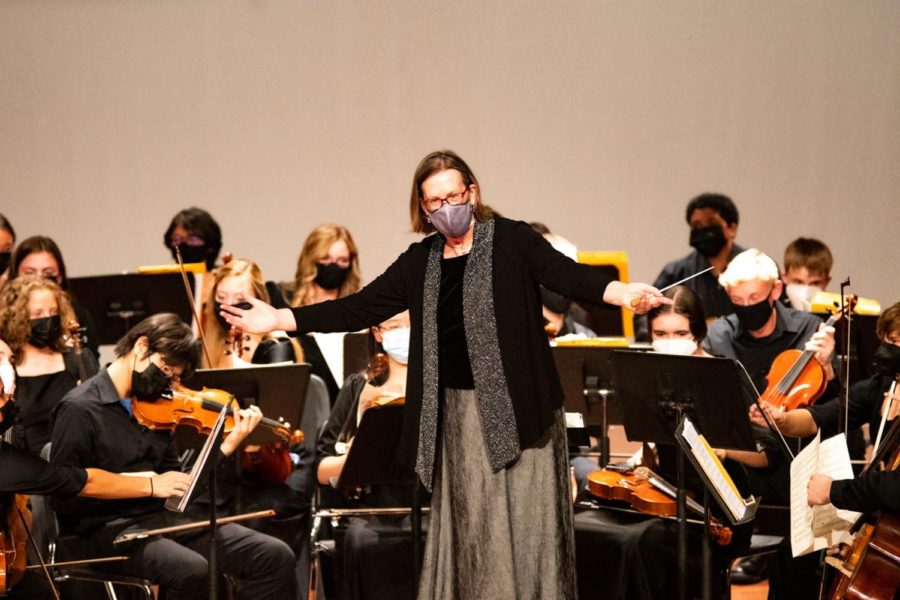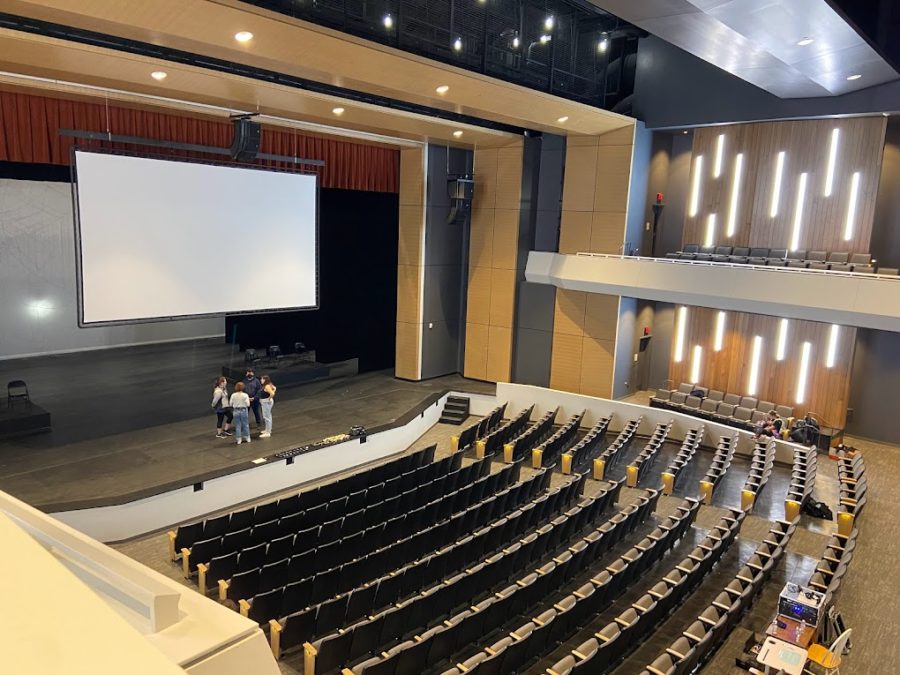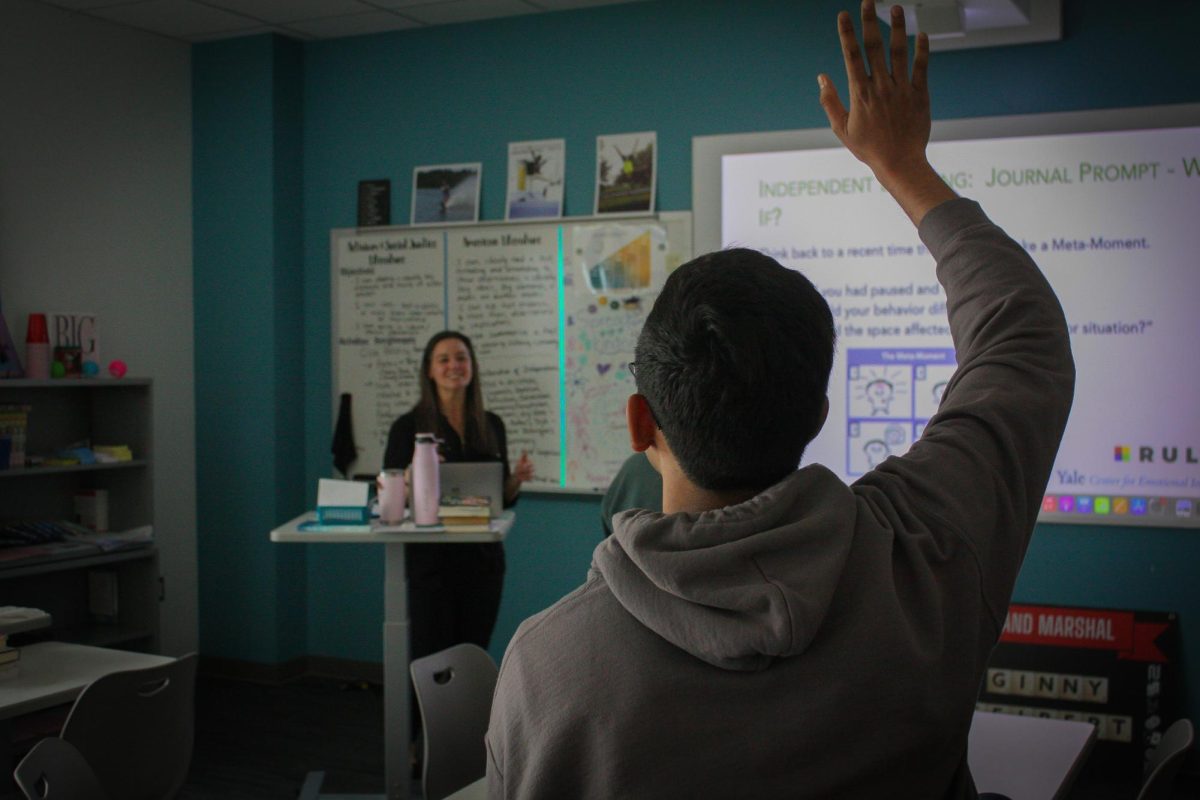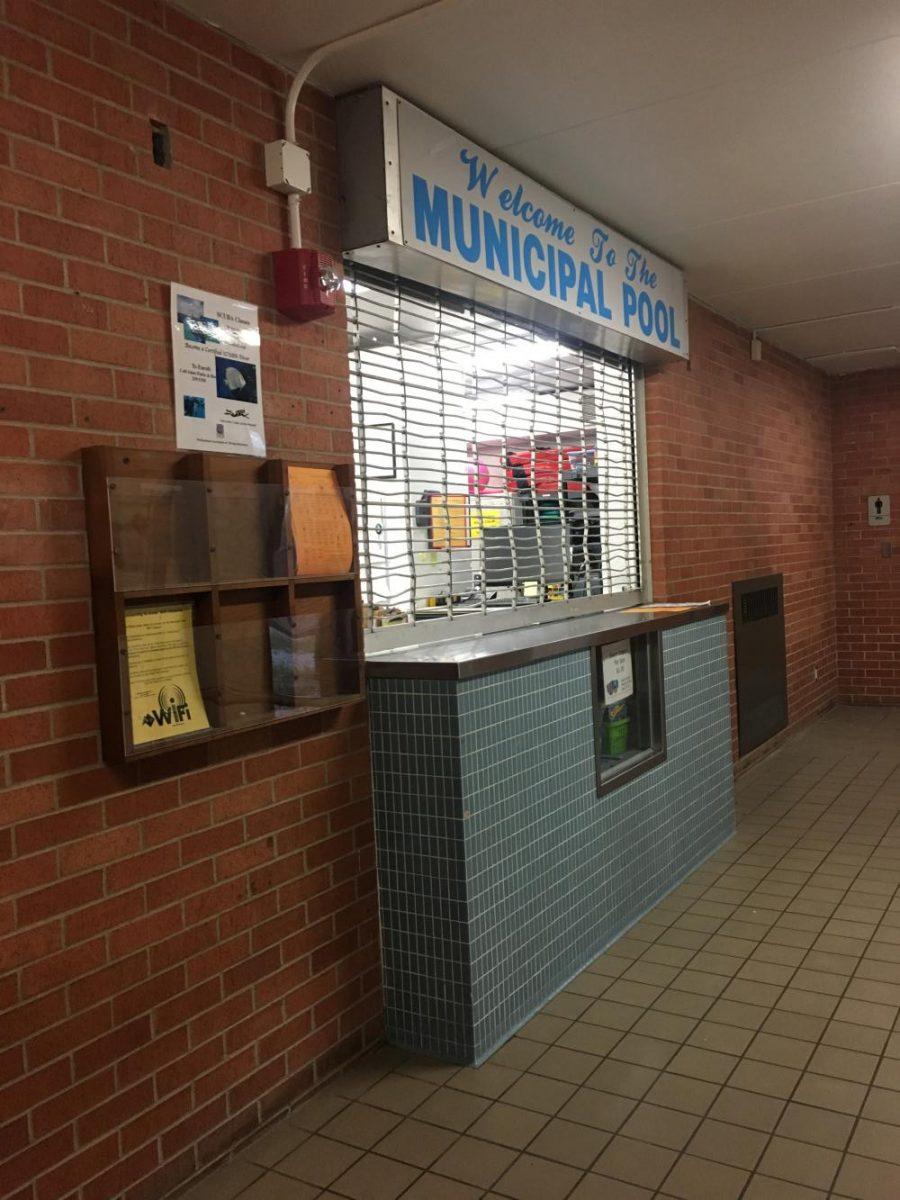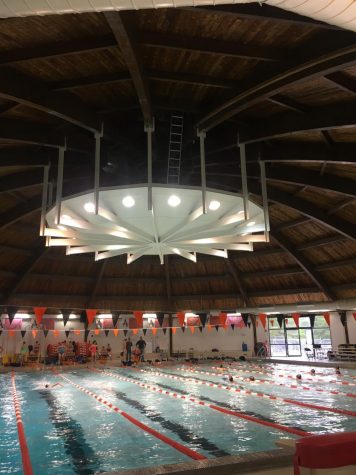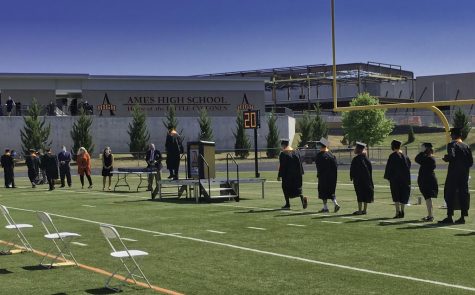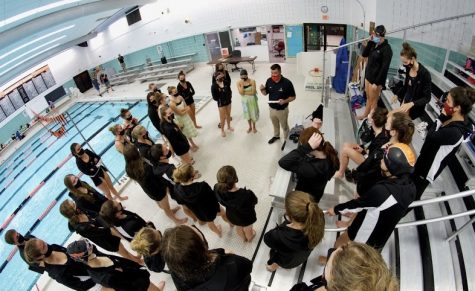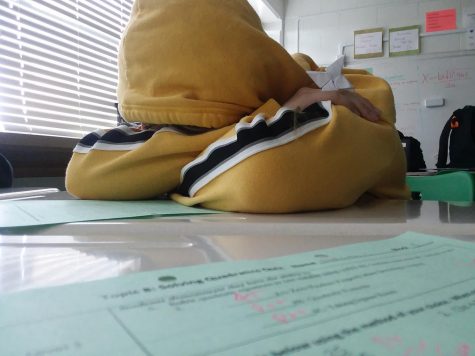The Pool Dilemma
October 5, 2017
Senior Olivia Jenks secures her swim cap over her hair, determinedly snaps her goggles onto her face and prepares to swim briskly to the other side of the Ames High pool.
A stench of mildew perfumes the air, most likely due to the faulty air quality in the facility. Jenks takes a breath and dives off of the charcoal black diving board into the unsanitary and chemically imbalanced abyss that is the Ames High school swimming pool.
The Ames High School pool is no stranger to such issues. Its age of 50+ years has rendered it unsafe and decrepit.
“First of all, the pool is simply at the end of its life,” said Jenks. “Much like a car, as a pool ages, it breaks down.”
Swimmers and divers alike complain about the bad water and air quality in the building, and athletes are often forced to bring inhalers.
Swimmers using the pool are said to experience a phenomenon called “chlorine cough”-a consequence of the lack of ventilation.
The windows in the pool area no longer seal off hot or cold air, creating uncomfortable temperature situations.
There are also traces of asbestos found in mechanical areas of the building. Fortunately, students are not directly exposed to these areas but any changes made these areas could be potentially dangerous for athletes.
These issues are not common with other swimming facilities- in fact- Jenks says that when students decide to swim in college, they no longer deal with problems like these in their new swimming facilities.
“The kids that swim in the pool everyday put in so much hard work and spend so much time in a facility that is not up to standards with what they should be training in.” said AHS senior and swimmer Jazlyn Horras.
Horras also describes the room housing the pool as “dingy and dirty.”
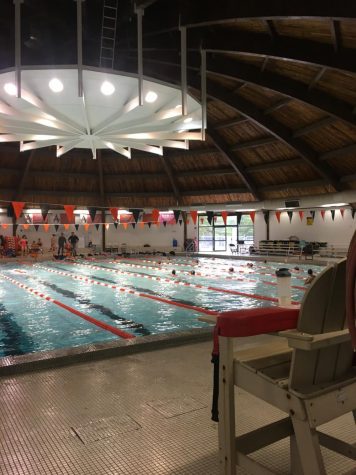
“We are all trying to do a sport that we love and create a team that has a legacy of winning and being the best, but the place where we have to spend so much of our time falling apart on us.” said Horras, sadly.
“I feel unsafe,” said AHS diver Eileen Murray.
Murray also described an instance when a chunk of ceiling fell into the pool as the diving team was practicing, “Luckily no swimmers were in the pool so it didn’t land on anyone,” said Murray.
The pool is also no longer able to accomodate the number of patrons it holds on a day to day basis. Approximately 150 swimmers use the pool every day, with some swimmers even using it twice a day.
“For ideal training with a 9 lane pool, there need to be no more than around 60 swimmers in the water at a time, but both the high school team and ACAC have larger teams than that” said Jenks.
In 2013, the pool was closed briefly after swimmers reported feeling “tingly.” Later, it was determined that this was due to an issue with an electric cable running below the pool.
While a majority agrees that the decaying pool certainly presents an issue, the solution proves to be controversial.
Meetings were held between the facilities committee of the school board and swimming coaches at the pool, yet, later in the year, the school board members began to shy away from the issue.
As a result, the city has proposed the construction of a new pool in a separate location as part of a “Healthy life center.”
While this deal will suffice the requests of ACAC, a private swimming organization in the city of Ames, it brings about various issues for the high school swimming program.
Ames High school students will be forced to drive to and from the pool to the highschool twice a day. The current location being offered is off of Ontario street, a lengthy trek from the high school.
“If you know the intersection of 13th and Stange, which you’d have to take to get there from the high school, you’d know that it’s very traffic-heavy” said Flannery. “Not a single student would be on time for school.”
Special education students who currently use the pool for aquatic activities will also lose an opportunity to socialize and exercise.
“Our kids are worth the investment of an on-site facility. Why would we outsource our swimming program to the City of Ames? ” said Flannery. “It’s like building a new high school, not building an auditorium and then telling orchestra, band, and drama kids that they’ll need to practice at the city hall auditorium.”
If the pool is owned by the city, the plan will be for the city to lease out the pool to the high school program, something that AHS swimming coach Dan Flannery argues is completely unfair and degrading.
“No club should be leased time from the city, maybe in other schools but not us. Ames is different. That’s been my sense the entire time I’ve been here,” said Flannery. “We’ll lose our luster if we go off-site.”
In this scenario, the city would essentially dictate when the swimming and diving teams could and couldn’t practice.
While a new pool would require a substantial sum, the city is supposedly over-estimating the costs.
Flannery says that following a visit to the Linn-Mar high school pool (a model of the desired AHS pool), the coaches received an affordable cost-estimate that was exaggerated by a factor of $75,000 when restated by the city.
If the high school were to partner with ACAC, the cost would be approximately $50,000 from each side, a more cost-effective deal in comparison to partnership between the high school and the city or between ACAC and the city.
Despite the fact that ACAC has offered to pay $60,000 of the share, the school board is still reluctant to endorse this.
“They’re not listening to the competitive swimming community. It’s just another way to pass the block” said Flannery.
There was also discussion of potentially using money from the Physical Plant and Equipment Levy or PPEL to finance a new pool on school grounds, although this was tabled as this levy only pays for upkeep and upgrade. An entirely new pool building does not fall in this category.
Flannery argues that a bigger pool located at the high school will bring in more revenue and allow more community members an opportunity to learn to swim.
If more seating is provided, more people will be inclined to attend meets, in turn, leading to more money coming in from visitors watching swimmers and divers.
In this new off-site location, the city of Ames will need to regulate the pool temperature and air quality, a task that would need to be delegated to experts that the city would have to hire.
The features of the pool created by the city will not necessarily fit the criteria for a competitive swimming pool like the one needed by the high school program and ACAC.
Many swimmers and coaches feel incredibly underrepresented in this issue. However, the newly elected school board may shift the outcome of this debacle.
“I really hope that the new school board does take the time to look at both sides of the issue” said Flannery. “The kids deserve something for all their hard work.”

